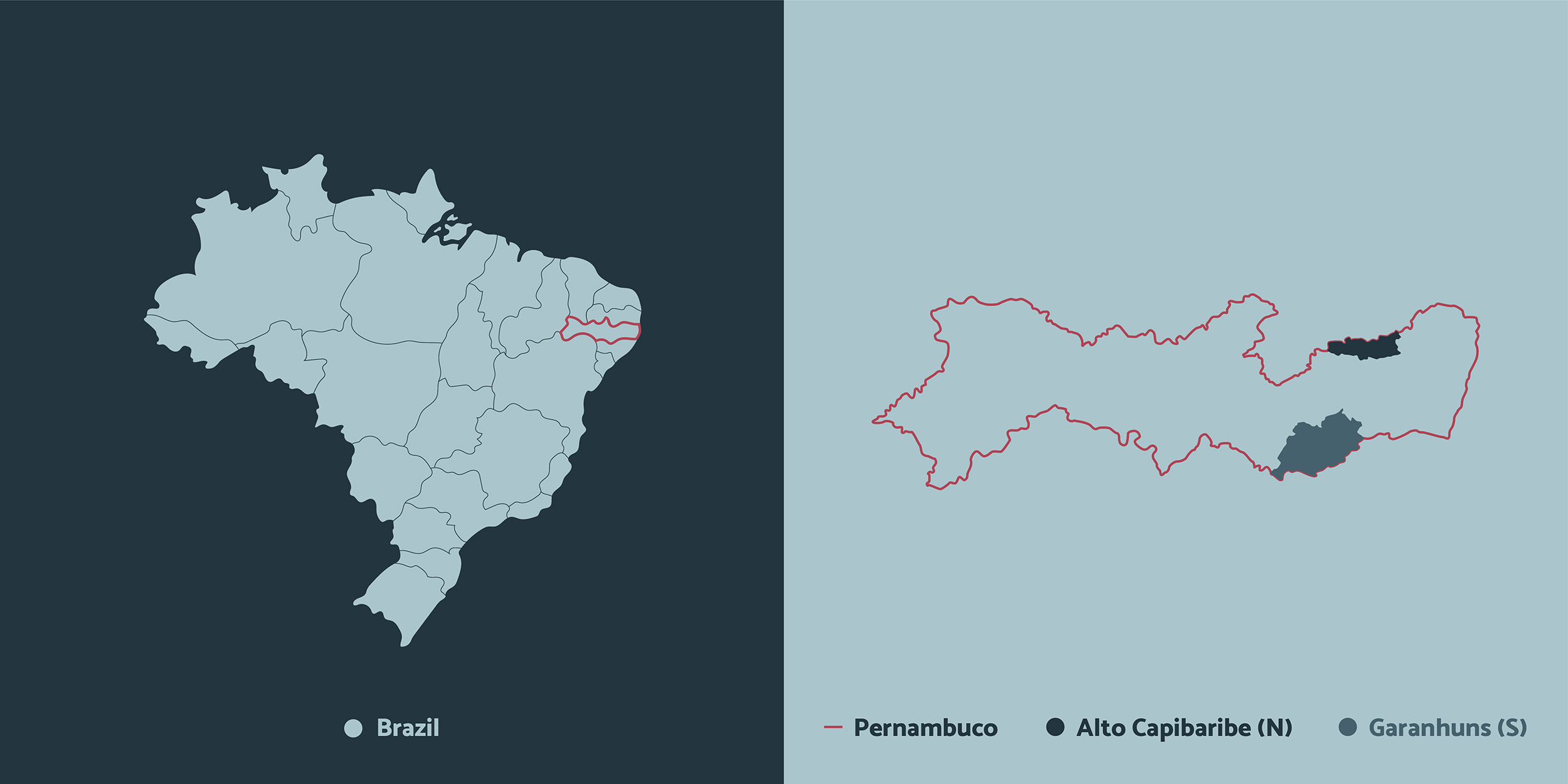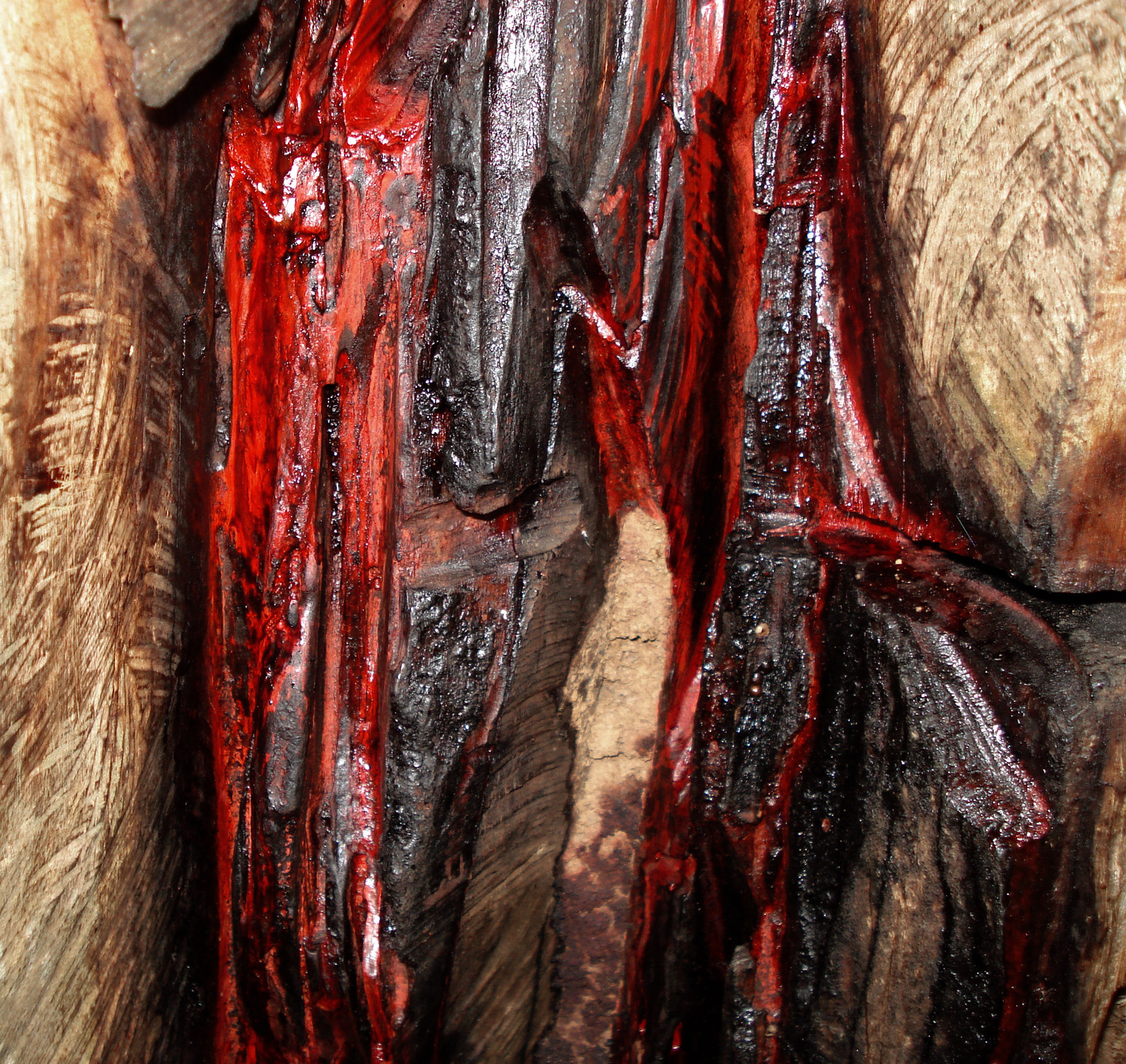Harvest: June–September
Elevation: 700–1,200 metres (2,300–3,940 feet) above sea level
Rainfall: 480–1,200 millimetres (19–47 inches)
Temperature: 17–31°C (63–88°F)
 Coffee production in Pernambuco is concentrated in the microregions of Alto Capibaribe (to the north) and Garanhuns (to the south).
Coffee production in Pernambuco is concentrated in the microregions of Alto Capibaribe (to the north) and Garanhuns (to the south).
The state of Pernambuco lies in the northeast of Brazil. This roughly 200-kilometre-wide strip of land is sandwiched between Bahia and Ceará in the west, and it stretches to the Atlantic coast in the east. The coastal region of Pernambuco once represented the northernmost extent of the tropical Atlantic forest, but it is now dominated by large sugarcane plantations. Inland, the high, rocky plateaus of the sertão are hot and dry, with some regions classified as desert. Between these two regions, the high altitudes of the Serra da Borborema, the northernmost portion of the Brazilian Highlands, result in cooler temperatures suitable for coffee farming.
 The deep-red wood of the brazilwood tree, sometimes called Pernambuco thanks to its abundance in the state.
The deep-red wood of the brazilwood tree, sometimes called Pernambuco thanks to its abundance in the state.
The colonial economy of Pernambuco was originally built on brazilwood, which also became known as Pernambuco because the tree was so abundant in the region. By the sixteenth century, sugar plantations had taken over the local economy, and sugar is still the state’s main agricultural export today.
For many years, the amount of coffee being grown has been in steep decline. In 2006, Pernambuco produced 49,000 bags (Cecafé 2007), but by 2019 that figure had dropped to just 2,000 (IBGE 2021). As a result, coffee grown in Pernambuco is not well known — even within Pernambuco, only 22% of consumers are aware that coffee is grown in the state (TVJornal 2018).
On the other hand, with the adoption of irrigation and other techniques, new regions for coffee-growing are opening up in the higher-altitude regions of the western parts of the state. The new farms focus on the specialty market and have the potential for high productivity (Alves 2020).